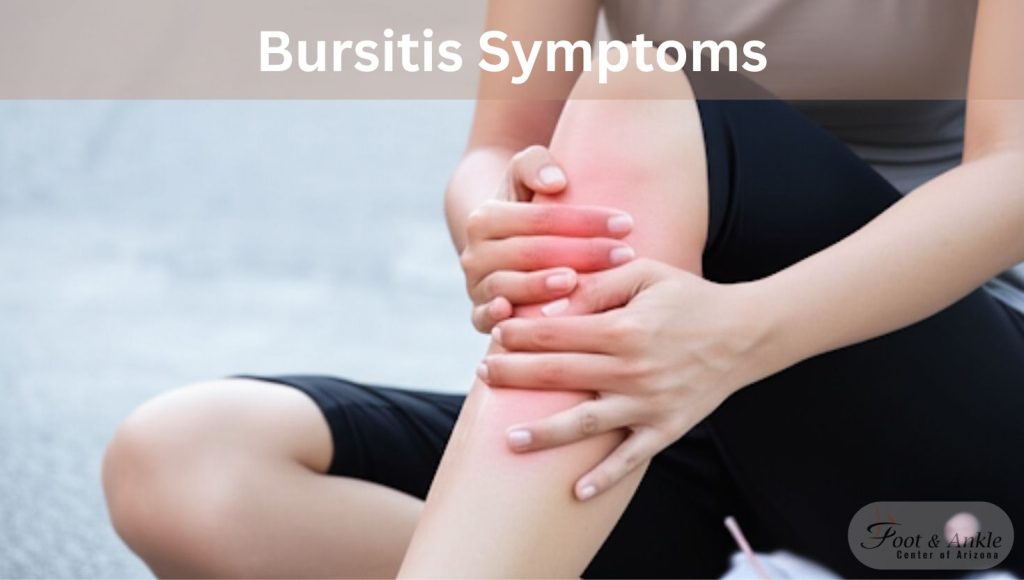Bursitis, a common yet misunderstood condition, affects numerous individuals worldwide. By causing inflammation in specific body parts, it may lead to discomfort or even chronic pain. The overlooked body parts – our feet, are most commonly affected. So, let’s dive into understanding what bursitis is, its symptoms, possible treatments, and importantly- its impact on foot health.
What is Bursitis?
Bursitis refers to the inflammation of a small fluid-filled sac, known as a bursa, that is located near a joint, bone, or tendon. A bursa’s primary function is to protect these areas from friction, making it especially crucial in areas exposed to regular or repetitive motion.
However, improper footwear or constant irritation can lead to an adverse reaction, causing the bursa to inflame, resulting in Bursitis. Within the foot, the heel and the toes are predominantly affected by this condition.
Eyeing the Symptoms
Symptoms of bursitis can vary greatly depending on the individual and the severity of the condition. Typically, symptoms manifest in localized redness, swelling, and pain. It might cause a constant throbbing sensation to sharp, stabbing pains, primarily when engaging in activities that place stress on the affected location.
Best Practices for Bursitis Treatment
Bursitis treatment encompasses several options, aiming to alleviate pain, reduce inflammation, and restore mobility. Most often, clinicians recommend a four-stage treatment plan:
- Rest: Refrain from activities that can exacerbate the inflammation and pain. Preliminary rest grants the affected area the necessary break it needs to calm the inflammation.
- Ice Therapy: Regular application of ice can help to reduce the swelling and relieve localized pain.
- Anti-Inflammatory Drugs: Nonsteroidal anti-inflammatory drugs (NSAIDs), such as ibuprofen, are common prescriptions for bursitis. These help mitigate inflammation and manage discomfort more effectively.
- Padding: Adding padding to the area can further reduce friction, giving the inflamed bursa a chance to heal.
- Corticosteroid injections: If the above remedies do not provide adequate pain relief, doctors may resort to corticosteroid injections. These powerful anti-inflammatory agents can help to reduce inflammation and relieve pain swiftly.
However, in chronic or severe cases where nonsurgical interventions fail to provide solace, surgery might become a necessary route.
Bursitis: Questions Frequently Asked
People commonly seek answers to specific questions concerning Bursitis. Because education is the first step towards prevention and treatment, here are some of the most frequently asked queries.
- What is the best thing to do for bursitis? The best first step towards addressing Bursitis is resting the affected area and applying localized ice therapy. NSAIDs can also be beneficial in providing pain relief.
- What are the three symptoms of bursitis? The most common symptoms of bursitis include localized redness, swelling, and pain in the affected area.
- Does bursitis ever go away on its own? Mild cases of bursitis may improve independently with adequate rest and care. However, more severe or chronic cases require medical intervention.
- What happens if bursitis is left untreated? If left untreated, bursitis can lead to chronic pain and loss of movement in the affected joint. Severe cases may require surgical intervention.
Wrapping It Up
Understanding bursitis, from its symptoms to its treatments, is crucial. It allows for early identification and intervention, helping to prevent the escalation of this painful condition. Remember, timely consultation and adherence to prescribed treatment can significantly improve your quality of life when dealing with bursitis.
If you find yourself seeking more information, or suspecting that you might be experiencing Bursitis, it’s essential to reach out to a healthcare professional. Pain does not have to be a constant in your life – help is available, and recovery is within reach.
Despite the challenges bursitis poses, its treatment is well within our grasp, thanks to advancements in modern medicine. For a pain-free tomorrow, take that step today – consult a doctor and reclaim your comfort.




